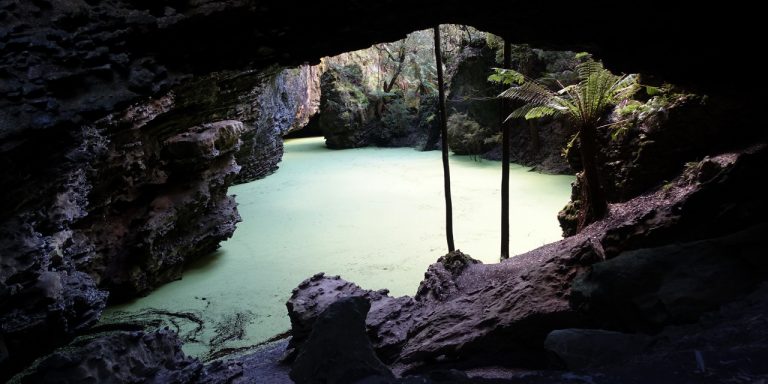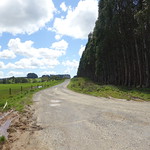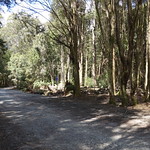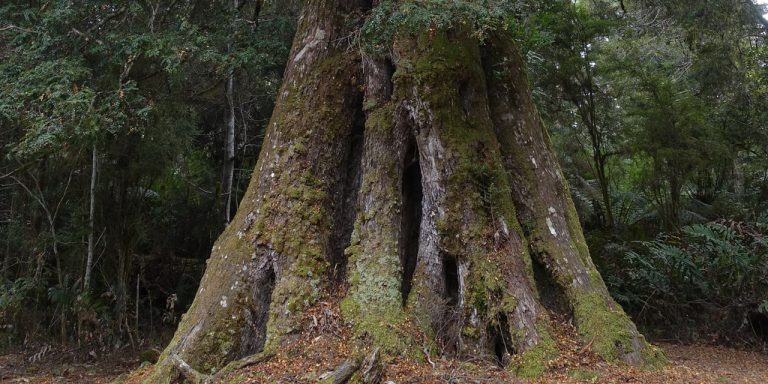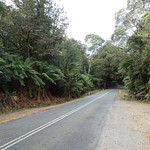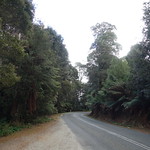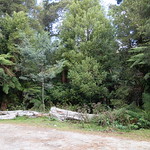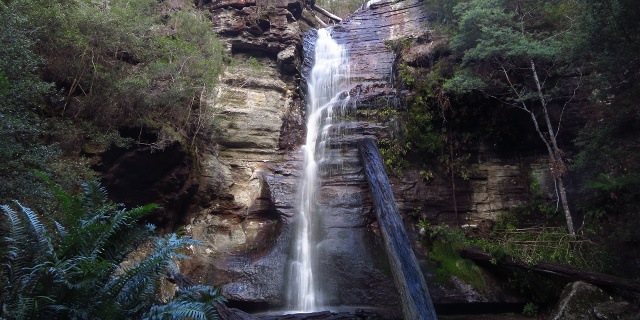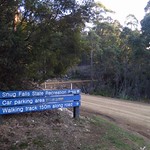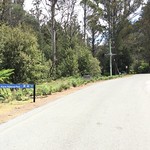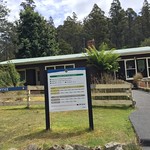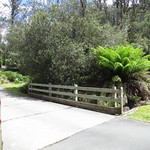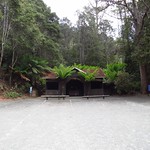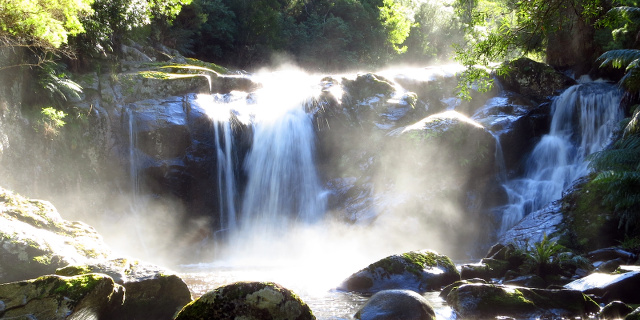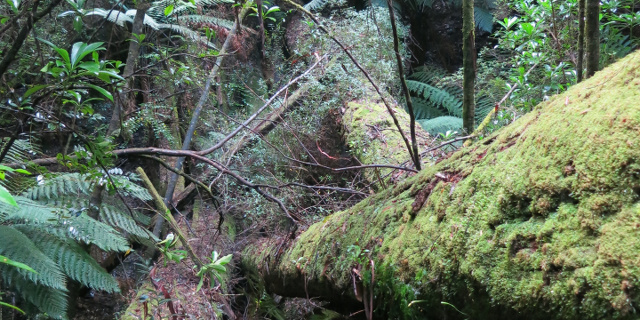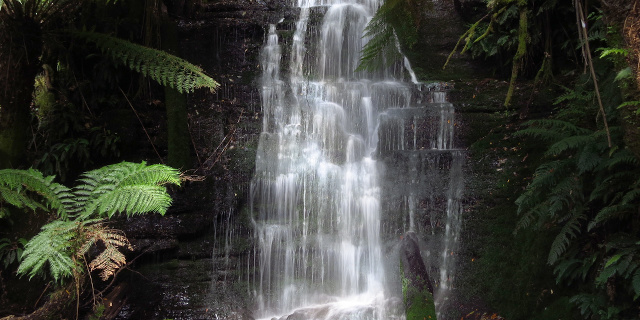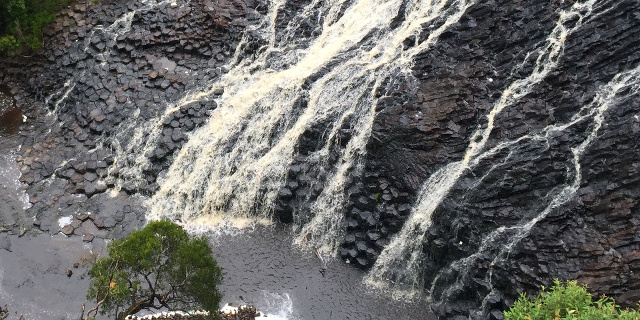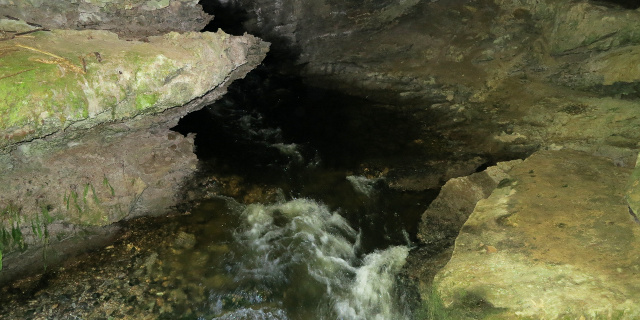Trowutta Arch is a geological feature south of Smithton, Tasmania, Australia. It is a natural arch eroded out of limestone. A walking track leads to the arch and an adjacent flooded sinkhole.
Getting there
Trowutta Arch was a long way from most of Tasmania. From anywhere not already on the west coast, it meant driving:
- West along the Bass Highway
- South through Edith Creek
- East onto Trowutta Road and Reid’s Road
- South onto Reynold’s Road for 3 kilometres (unsealed)
- East onto Gun Road for 1.3 kilometres (unsealed)
These roads passed through some scenic country, but each was progressively narrower and slower to drive on.
Trowutta Road and Reid’s Road were part of the Tarkine Drive, which looped past several other features of the Tarkine.
